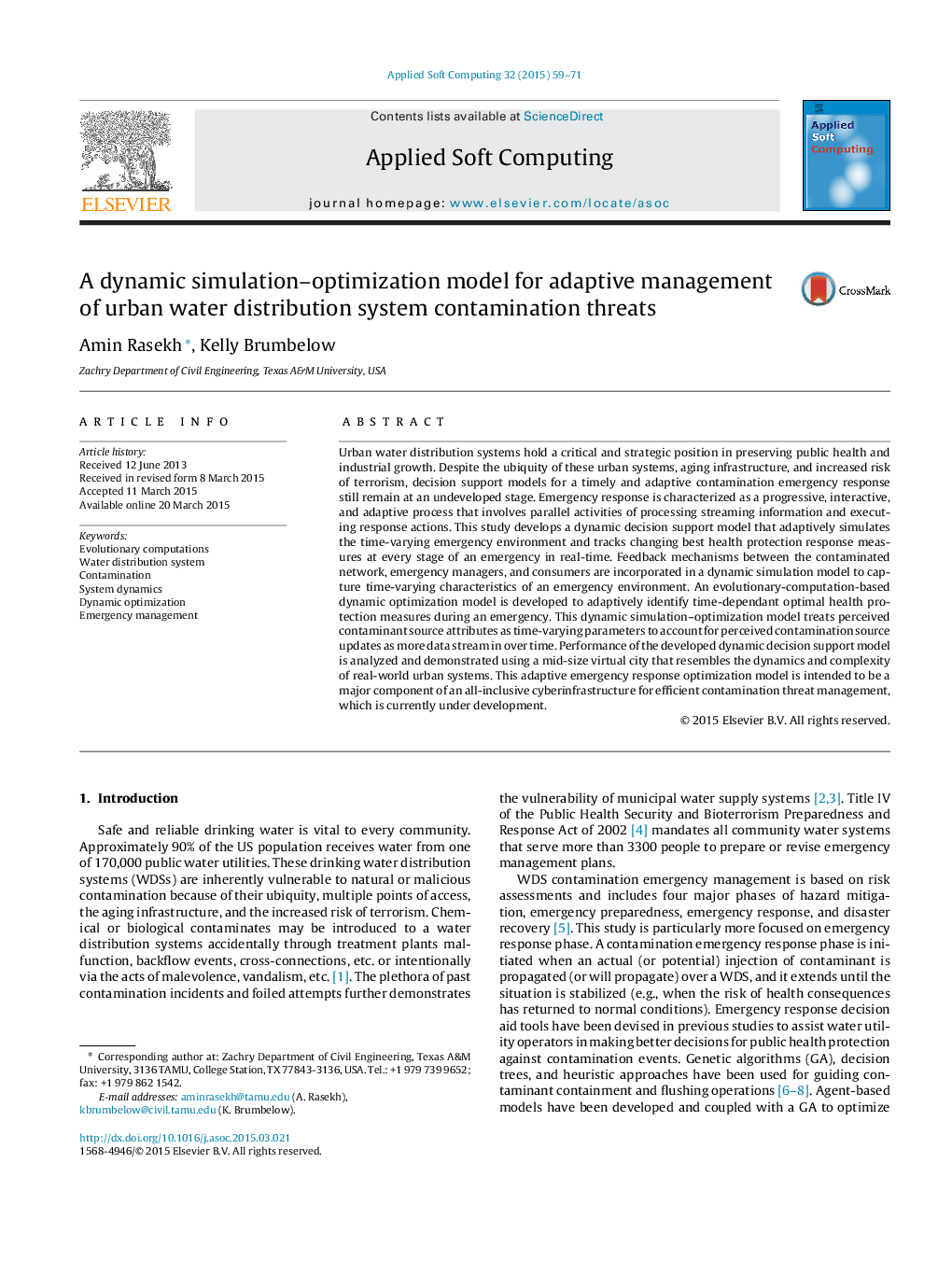| Article ID | Journal | Published Year | Pages | File Type |
|---|---|---|---|---|
| 494998 | Applied Soft Computing | 2015 | 13 Pages |
•Dynamic simulation is performed to model water distribution system contamination.•Dynamic optimization is used to track time-varying optimal response protocols.•Dynamic models provide adaptive decision support for public health protection.
Urban water distribution systems hold a critical and strategic position in preserving public health and industrial growth. Despite the ubiquity of these urban systems, aging infrastructure, and increased risk of terrorism, decision support models for a timely and adaptive contamination emergency response still remain at an undeveloped stage. Emergency response is characterized as a progressive, interactive, and adaptive process that involves parallel activities of processing streaming information and executing response actions. This study develops a dynamic decision support model that adaptively simulates the time-varying emergency environment and tracks changing best health protection response measures at every stage of an emergency in real-time. Feedback mechanisms between the contaminated network, emergency managers, and consumers are incorporated in a dynamic simulation model to capture time-varying characteristics of an emergency environment. An evolutionary-computation-based dynamic optimization model is developed to adaptively identify time-dependant optimal health protection measures during an emergency. This dynamic simulation–optimization model treats perceived contaminant source attributes as time-varying parameters to account for perceived contamination source updates as more data stream in over time. Performance of the developed dynamic decision support model is analyzed and demonstrated using a mid-size virtual city that resembles the dynamics and complexity of real-world urban systems. This adaptive emergency response optimization model is intended to be a major component of an all-inclusive cyberinfrastructure for efficient contamination threat management, which is currently under development.
Graphical abstractFigure optionsDownload full-size imageDownload as PowerPoint slide
